The 5th Asia-Pacific Bonsai Friendship Federation Convention & Exhibition featured a number of trees that fell somewhat outside of the stylistic norms I’m used to seeing at bonsai exhibits. The basic approaches were familiar – windswept trees and group plantings, for example – though I’m not used to seeing so many at a single event.
I enjoy these trees as seeing them brings up questions – are the varieties well-suited to these styles? Do the styles say something about how these trees grow in nature – or do they speak more to the artists behind the creations? My guess is that some of the trees below take more cues from nature than others.
Here then, are more bonsai on display at the 2015 ABFF convention and exhibition in Rin Rin Park in Vietnam.

Wrightia religiosa – photos courtesy Trung Hồ Hương
A clear example of a windswept bonsai – do wrightia exhibit these characteristics in nature?
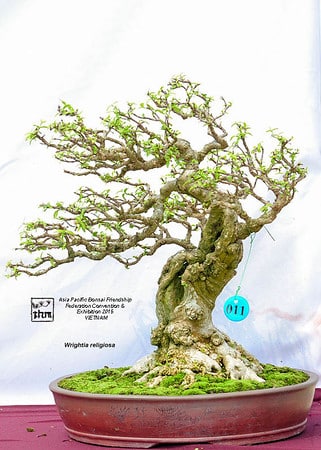
Wrightia religiosa
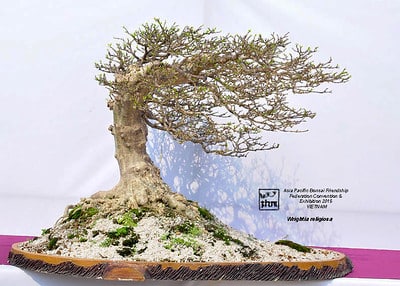
Wrightia religiosa
Some trees featured very ornate pots.
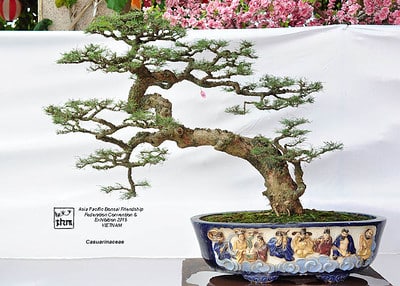
Casuarinaceae
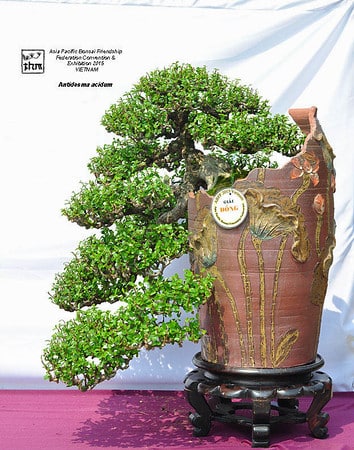
Antidesma acidum
I like the natural deadwood stand for the Antidesma below.
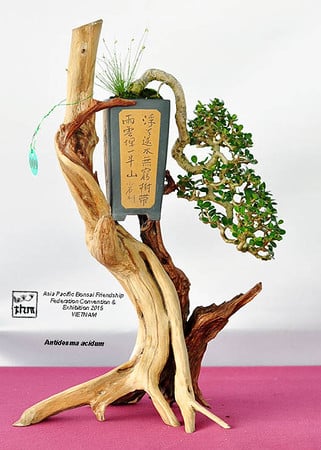
Antidesma acidum
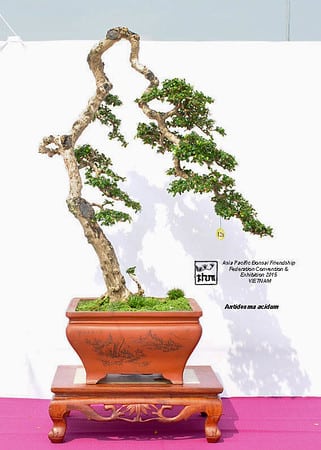
Antidesma acidum
The exhibit also featured a number of rock plantings and penjing. Many, but not all, with figurines.
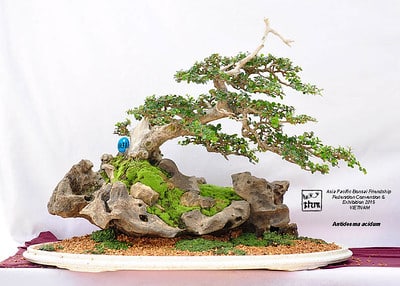
Antidesma acidum
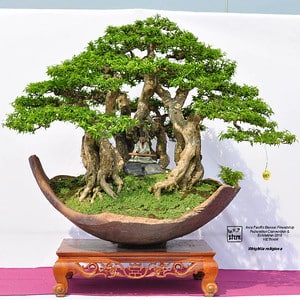
Wrightia religiosa
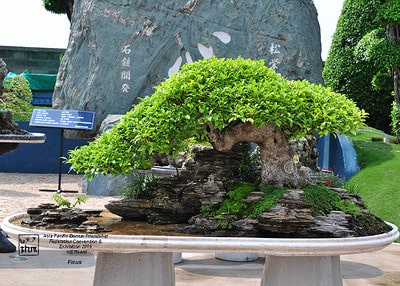
Ficus
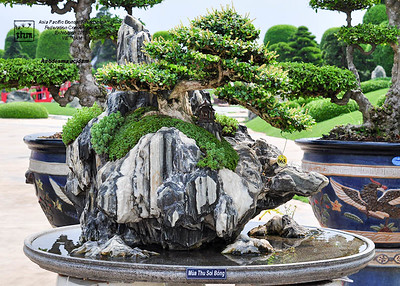
Tropical bonsai
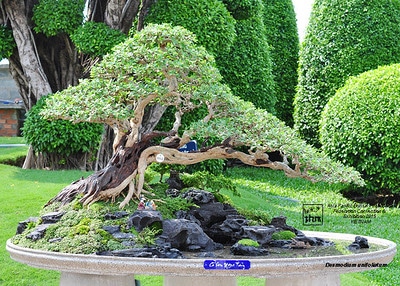
Desmodium unifoliatum
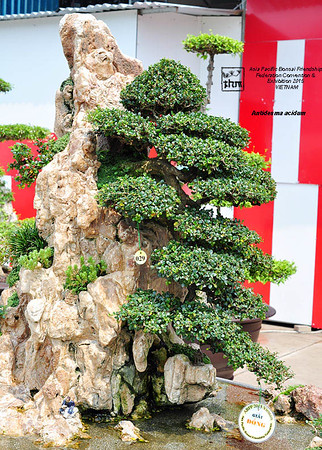
Tropical bonsai
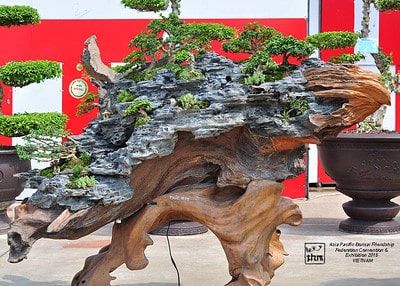
Tropical bonsai
Subscribe to Bonsai Tonight
New Posts Delivered Every Tuesday and Friday
Kit Bowns says
Mmmmmmm. Toffee powered bonsai gardening.
>
Alain Krizic says
The “windswept” trees you are showing are typical of some Chinese bonsai, and Robert Steven (whom you must have heard of) has taken up this style in his own way. It’s different from our western vision of windswept trees trees insofar as most of western bonsai enthusiasts have a sense of aesthetics based on the Japanese norms: a winswept tree is a tree that grows in an environment where the dominant winds always blow in the same direction. Here, to me, it evokes a tree that grows in a place where the winds turn according to the season. Hence, the fact that for the first two photos, the trunks and main branches grow mainly in one direction whereas the finer branches go the other way. It’s more like a tree that is under a gust of wind, like in the end of autumn while it grew in another direction the rest of the year.
For the other trees, firstly, this Chinese feel, in my opinion, comes from the fact that the container and other elements in the display are far more important to evoke a place, a feeling, than in Japanese or western Japanese-based bonsai.In Japanese traditional display, the different elements are separate (main tree / shitakusa-kusamono-other / scroll-mask…) and putting these elements together is the key. displaying the same tree in the same pot at different seasons can produce a totally different feeling if you change the the accompanying plant or the other element(s) in the display.
From what I can understand (? … ^^), Chinese “penjing” is displayed by itself, hence the much higher frequency of landscapes that include human or animal figures, or “very ornate pots” that are part of the “story”.
Other features of “Chinese” bonsai also seem to be a very long first (or second) branch and much more acute angles.
Sorry for the double quotes: English is not my first language.
And most of all, thank you very much for your blog, “Keep up the good work!” like I always tell my students 😉
Alain K.
Jonas Dupuich says
Thanks Alain!
thomdec says
Hi Jonas,
You bring up some very good questions that I think many of us face when styling / designing a tree. When I first started bonsai, I tended to lean more toward “nature’s way”. But, over the years I have learned to appreciate trees that fall outside the stylistic norm, but that still maintain the look nature intended. A tough balancing act at best.
It will be interesting to see what Portland and The Artisans Cup deliver. I bet we’ll see some interesting trees / expressions on exhibit. I can’t wait!
Best,
Thom
Don Quixote says
I clicked on my normal Friday night fix of Bonsai Tonight and got Penjing Tonight. Needless to say it turned out to be a very early night and not much of a fix at all. Bonsai and Penjing do not mix. Its like clicking on Hot Rod Tonight and getting Amish Buggy Tonight. Its like clicking on Hot Babes Tonight and getting Old Stable Mares Tonight. Its like clicking on………You get the point.